Step 1: Schedule an Appointment
I think it goes without saying, your vein treatment journey starts when you schedule an appointment online or call your chosen spider vein treatment centers in NJ. You can find three amazing spider vein treatment centers in New Jersey — VTC Clifton, VTC Paramus, and VTC Woodland Park. The Clifton vein treatment center is just past the Ford dealership on route 46-E, the Paramus vein treatment center is next door to Bob’s Furniture, and the Woodland Park vein center is at 1167 McBride Ave Suite 2.
Step 2: Receive Free Insurance Verification
The spider vein treatment centers in Clifton, Paramus, and Woodland Park provide free insurance verification. When you schedule an appointment, one of the vein center’s staff members will request your insurance details. We encourage you to provide the insurance details in advance to give our staff enough time to work out the details. This ensures that your appointment is truly valuable and you receive an accurate quotation with or without insurance coverage.

Step 3: Initial Consultation
During your initial consultation, you’ll have to complete the paperwork and describe your symptoms and medical history. The vein doctor will examine your details, review your medical history, discuss your symptoms, and examine your leg veins. You’ll be asked if you have restless leg syndrome, frequent leg cramps, throbbing leg veins, leg swelling, and leg heaviness — these are some of the most common symptoms of vein disease. The vein doctor will also examine your spider veins and varicose veins to determine the likelihood of vein disease.
Step 4: Vascular Imaging
Venous insufficiency (vein disease) is the root cause of most vein problems. It’s a medical condition that causes your vein valves to collapse, making blood flow in the wrong direction and accumulate in your leg veins. The continued accumulation of blood in your leg veins leads to vascular dilation and the formation of spider veins and varicose veins. Our vein doctors perform thorough vascular imaging tests, such as duplex ultrasound, to visualize the blood flow in your leg veins and determine if you have vein disease.
Step 5: Treatment Planning
Based on your diagnosis, symptoms, goals, and medical history, the vein doctor will curate your minimally invasive vein treatment plan. This is a collaborative process wherein the vein doctor will explain all your treatment options, providing an overview of their pros and cons, so you’re empowered to make an informed decision. The vein doctor will curate a treatment plan that addresses the root cause of your vein problems and alleviates the superficial symptoms. They’ll also provide a step-by-step overview of your vein treatment.
Step 6: Financial Clarity
After the vein treatment plan, you’ll receive a complete overview of your vein treatment costs. The vein doctor will discuss your insurance coverage options, help you maximize coverage, and provide a cost overview with and without coverage. If you’re not eligible for insurance coverage, you can also discuss alternative financing plans with low interests. Basically, we follow a strict “no surprise billing” policy — you have complete clarity of your payment options and cost before the treatment.
Step 7: Primary Treatment
The primary treatment refers to the treatment of underlying chronic venous insufficiency. We can’t treat spider veins and varicose veins until we address the underlying problem. The best minimally invasive treatments for chronic venous insufficiency include radiofrequency ablation, laser ablation, venaseal, and clarivein. Depending on the chosen treatment plan, the vein doctor will use thermal energy, laser energy, mechanical pressure, or a medical-grade adhesive to destroy the diseased saphenous vein responsible for your vein problems. The accumulated blood will reroute into healthier leg veins, restoring effective blood circulation to the heart.
Step 8: Cosmetic Treatment
The cosmetic treatment refers to the treatment of spider veins and superficial varicose veins. The best minimally invasive treatments for spider veins and varicose veins are sclerotherapy and ambulatory phlebectomy. Sclerotherapy involves injecting a medicine called sclerosant into the spider veins to make them shrink, harden, and get metabolized by the body, thus fading away from the skin’s surface. Ambulatory phlebectomy involves making incisions on the skin’s surface to extract large varicose veins. Both procedures are equally effective and safe, and they provide stellar cosmetic results.
Step 9: Recovery & Aftercare
Minimally invasive treatments for spider veins and varicose veins don’t involve hospitalization, downtime, or harsh side effects. After the vein treatment, your legs may feel a little sore, and you may experience mild redness, irritation, and swelling. However, the side effects are mild and temporary — you can resume your daily activities and work immediately after the vein treatment. The vein doctor will provide some post-treatment recovery guidelines, such as wearing compression stockings, and then you can resume your daily activities. Most patients seek vein treatments during their work lunch break.
Step 10: Routine Follow-Up
Our vein doctors don’t abandon you just because you’re no longer in the vein center. They’ll keep in touch via phone to ask about your recovery, and you can contact them if you experience any harsh side effects or complications. You may have to return for a follow-up session in a few weeks — the vein doctor will assess your vascular health to determine if there are any lingering problems. In some cases, you may also need additional sessions of sclerotherapy to remove all the spider veins.

